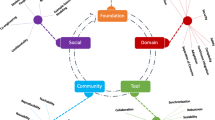Abstract
Complex software and systems are pervasive in today’s world. In a growing number of fields they come to play a critical role. In order to provide a high assurance level, verification and validation (V&V) should be considered early in the development process. This paper shows how this can be achieved based on a goal-oriented requirements engineering framework which combines complementary semi-formal and formal notations. This allows the analyst to formalize only when and where needed and also preserves optimal communication with stakeholders and developers.
For the industrial application of the methodology, a supporting toolbox was developed. It consist of a number of tightly integrated tools for performing V&V tasks at requirements level. This is achieved through the use of (1) a roundtrip mapping between the requirements language and the specific formal languages used in the underlying formal tools (such as SAT or constraint solvers) and (2) graphical views using domain-based representations. This paper will focus on two major and representative tools: the Refinement Checker (about verification) and the Animator (about validation).
Similar content being viewed by others
References
Cimatti A, Clarke E, Giunchiglia E, Giunchiglia F, Pistore M, Roveri M, Sebastiani R, Tacchella A (2002) NuSMV version 2: An opensource tool for symbolic model checking. In: International Conference on Computer-Aided Verification (CAV, LNCS 2404), Denmark
Dardenne A, van Lamsweerde A, Fickas S (1993) Goal-directed requirements acquisition. Sci Comput Programm 20(1–2):3–50
Darimont R, van Lamsweerde A (1996) Formal refinement patterns for goal-driven requirements elaboration. FSE-4—4th ACM Symposium on the Foundations of Software Engineering, San Francisco
Easterbrook S, Lutz RR, Covington R, Kelly J, Ampo Y, Hamilton D (1998) Experiences using lightweight formal methods for requirements modeling. Softw Eng 24(1):4–14
The Standish Group (1995) http://www.standishgroup.com/chaos
European Software Institute (1996) European user survey analysis, report usv_eyr 2.1 espiti project
Jackson D (2000) Automating first-order relational logic, ACM SIGSOFT. In: Proceedings of the Conference Foundations of Software Engineering
Koymans R (1992) Specifying message passing and time-critical systems with temporal logic, lncs 651, Springer-Verlag
Letier E, van Lamsweerde A (2001) Agent-based tactics for goal-oriented requirements elaboration
Letier E, van Lamsweerde A (2002) Deriving operational software specifications from system goals. In: FSE'10: 10th ACM S1GSOFT Symposium on the Foundations of Software Engineering, Charleston
Leveson NG (1995) Safeware, system safety and computers, Addison-Wesley
Lutz RR (1993) Analyzing software requirements errors in safety-critical, embedded systems. IEEE International Symposium on Requirements Engineering. IEEE Computer Society Press, San Diego, CA, pp 126–133
Magee J, Pryce N, Giannakopoulou D, Kramer J (2000) Graphical animation of behavior models. Int Conf Softw Eng pp. 499–508
Manna Z, Pnueli A (1992) The reactive behavior of reactive and concurrent system, Springer-Verlag
McLean J, Heitmeyer C (1995) High assurance computer systems: A research agenda. America in the Age of Information, National Science and Technology Council Committee on Information and Communications Forum, Bethesda
Muller T (2000) Promoting constraints to first-class status. First International Conference on Computational Logic (CL, LNAI 1861), London UK
Ponsard C, Balych N, Massonet P, van Lamsweerde A, Vanderdonckt J (2005) Goal-oriented design of domain control panels. In: 12th International Workshop on Design, Specification and Verification of Interactive Systems, Newcastle, UK
Rushby J (2000) Disappearing formal methods. High-assurance systems engineering symposium. Association for Computing Machinery, Albuquerque, NM, pp 95–96
The Objectiver Tool, http://wwww.objectiver.com
Tran Van H, van Lamsweerde A, Massonet P, Ponsard C (2004) Goal-oriented requirements animation. In: 12th IEEE International Requirements Engineering Conference, Kyoto, Japan
van Lamsweerde A (2001) Goal-oriented requirements engineering: A guided tour
van Lamsweerde A, Darimont R, Letier E (1998) Managing conflicts in goal-driven requirements engineering. IEEE Transactions on Software Engineering, Special Issue on Managing Inconsistency in Software Development
van Lamsweerde A, Letier E (2000) Handling obstacles in goal-oriented requirements engineering. IEEE Trans Softw Eng, Special Issue on Except Handl 26(10)
van Lamsweerde A, Letier E (2003) From object orientation to goal orientation: A paradigm shift for requirements engineering. Radical Innovations of Software & System Engineering, Montery'02 Workshop, Venice, Italy, LNCS
van Lamsweerde A (2000) Requirements engineering in the year 00: a research perspective. In: International Conference on Software Engineering, pp 5–19
Author information
Authors and Affiliations
Corresponding author
Rights and permissions
About this article
Cite this article
Ponsard, C., Massonet, P., Molderez, J.F. et al. Early verification and validation of mission critical systems. Form Method Syst Des 30, 233–247 (2007). https://doi.org/10.1007/s10703-006-0028-8
Published:
Issue Date:
DOI: https://doi.org/10.1007/s10703-006-0028-8




